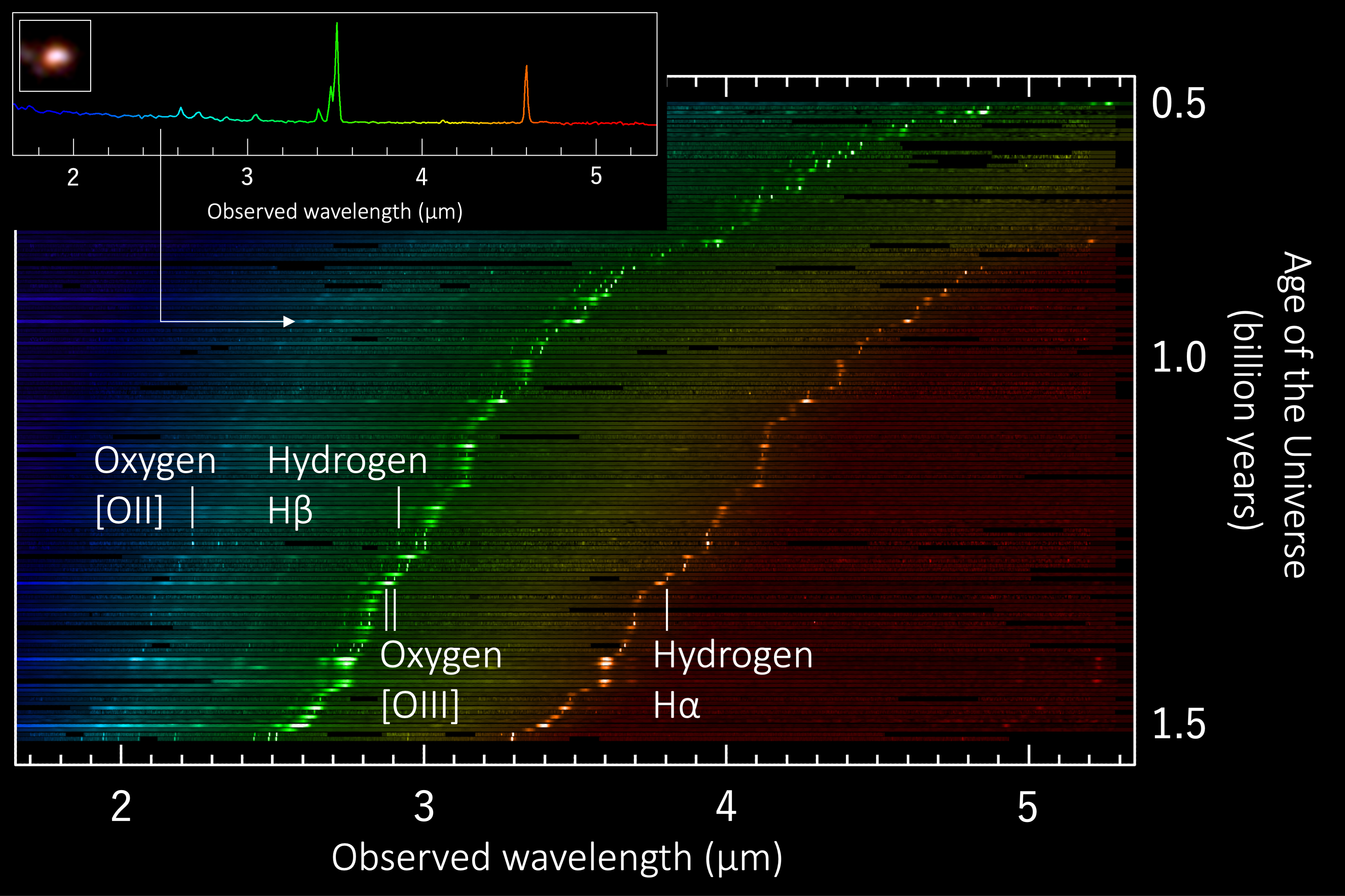Division of Science, NAOJ
Rapid Increase in Oxygen in Early Universe
Using extensive observational data from the James Webb Space Telescope, a research team led by a Project Assistant Professor Kimihiko Nakajima of the National Astronomical Observatory of Japan has examined the oxygen abundance (*) in the early Universe. Their findings show a remarkable increase in oxygen abundance in galaxies during the first 500-700 million years after the birth of the Universe.
Visit the following links for more information.
ICRR, Univ. Tokyo:
[English] https://www.icrr.u-tokyo.ac.jp/en/news/14330/
[Japanese] https://www.icrr.u-tokyo.ac.jp/news/14329/
NAOJ:
[English] https://www.nao.ac.jp/en/news/science/2023/20231110-dos.html
[Japanese] https://www.nao.ac.jp/news/science/2023/20231110-dos.html
The results are published in the Astrophysical Journal Supplement Series on November 13, 2023 under the title “JWST Census for the Mass-Metallicity Star Formation Relations at z = 4-10 with Self-consistent Flux Calibration and Proper Metallicity Calibrators.”
Authors: Kimihiko Nakajima, Masami Ouchi, Yuki Isobe, Yuichi Harikane, Yechi Zhang, Yoshiaki Ono, Hiroya Umeda, and Masamune Oguri
DOI: 10.3847/1538-4365/acd556
URL: https://iopscience.iop.org/article/10.3847/1538-4365/acd556
(*) Oxygen abundance refers to the ratio of the number of oxygen (O) to that of hydrogen (H), denoted as (O/H). Hydrogen, being an element present since the birth of the universe, is used as the reference.

(Illustration credit: NASA, ESA, CSA, K. Nakajima et al.)

(Illustration credit: NASA, ESA, CSA, K. Nakajima et al.)

